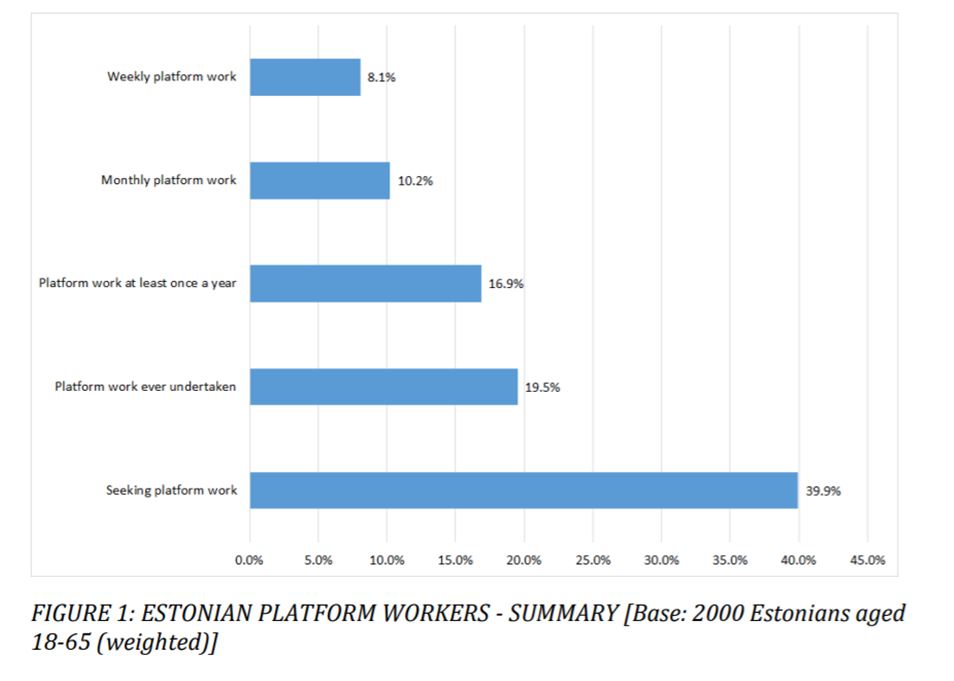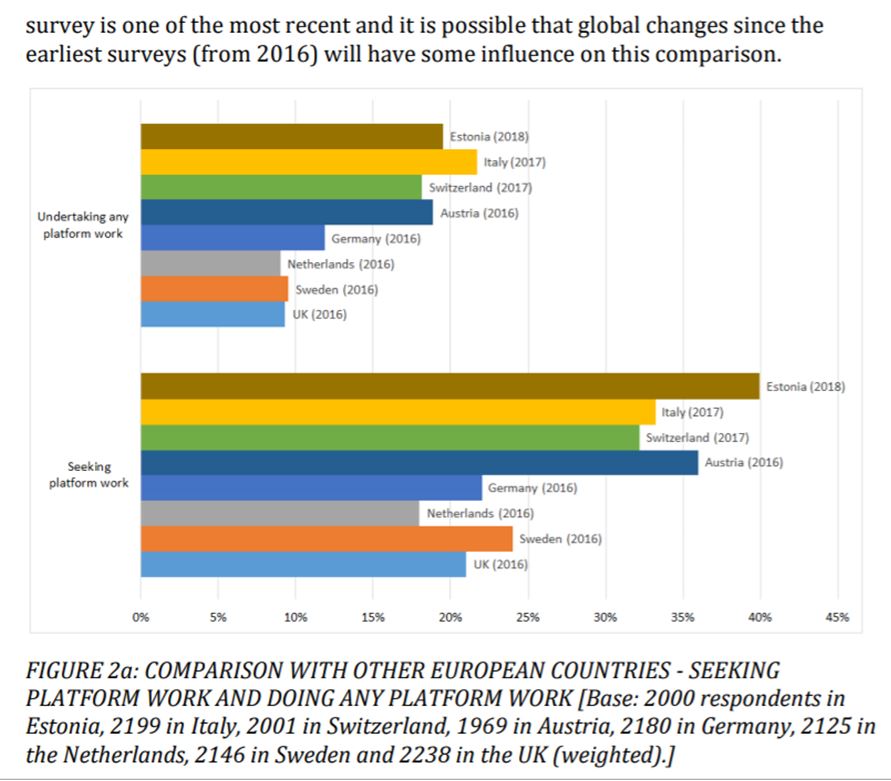8.1% of Estonians regularly work via online platforms.
In an online survey of 2000 Estonians between the ages of 18 and 65, 8.1% of the sample (after weighting) claimed to be doing work (via so-called “gig economy” platforms such as Upwork, Uber or Handy) at least once a week, using the broadest definition of this work1. 10.2% found such work at least once a month. When the definition was narrowed to those saying that they carried out work that they had found via a website or app and used an ‘app’ to notify them when work was available, as detailed below, the proportion was reduced to 3.6% who both undertook such work at least once a week and were informed of its availability at least once a week. 39.9% said they had tried to find work in this way but not all of them succeeded, however. The numbers of people seeking work via online platforms greatly exceed those who actually find it. Out of every 4 people looking for this kind of work, only one actually found it on a monthly basis, and even fewer on a weekly basis. The proportion who had actually undertaken such work was 19.5%, equivalent to approximately 161,100 people across the working age population of Estonia (aged 18-65). Women were less likely than men to undertake work this way: roughly 13.0% of women had undertaken work through these platforms, while 26.4% of men had done so.

Main source of work or a supplement to a main job?
It is often thought the gig economy is used as an occasional income top-up in addition to another main job, or even just for fun, and indeed for over threequarters of platform workers (76.4%) it represents less than half their income. But for a substantial minority of platform workers, it is the only or main source of income with 4.2% of platform workers saying it is their only source of income (equivalent to 4,400 people across the working age Estonian population) and 23.6% saying that it represents at least half of their income (equivalent to 24,800 people). A substantial proportion (39.5%) did not know or did not wish to divulge this information.
Male platform workers were more likely to respond that platform work was their only source of income. 4.3% of the male platform workers stated that this was their only source of income compared to 4.0% of the female platform workers.
How does this compare with other European countries?
A comparison with other European countries shows that Estonians are more likely to be seeking and doing platform work, perhaps as a top-up to other sources of income, than some countries but less than others. Note, however, that the Estonian survey is one of the most recent and it is possible that global changes since the earliest surveys (from 2016) will have some influence on this comparison.

Short raport can be found HERE.
Authors:
Ursula Huws, Professor of Labour and Globalisation, Hertfordshire Business School
Neil. H. Spencer, Reader in Applied Statistics, University of Hertfordshire
Matthew Coates, Research Fellow, Statistical Services and Consultancy Unit, University of Hertfordshire
Kaire Holts, Research Fellow, Hertfordshire Business School

 An independent think tank at the Riigikogu
An independent think tank at the Riigikogu